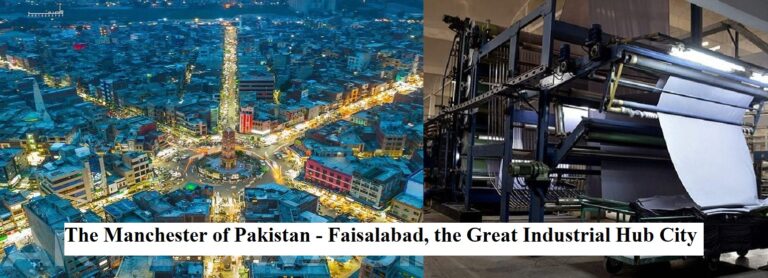In the food industry, proper labelling is crucial to ensure food safety and compliance with regulations and provide consumers with essential information about their products. Manual labelling can be time-consuming and error-prone, leading to increased labour costs, inconsistent label design, and potential regulatory fines. However, using a food label printer can streamline the labelling process, save time and money, and improve the accuracy and consistency of labelling.
The Basics of Food Label Printers
Definition and Function
A food label printer is a device that prints information on labels affixed to food products. These printers can create labels with various information, including product names, ingredients, nutritional information, and expiration dates.
Features and Capabilities
Food label printers have various features and capabilities that make them useful in different applications. Some key elements to consider when choosing a printer include label design software, printing speed and volume, and printing technology. There are also custom digital labels that companies can use according to their needs.
Benefits of Using a Food Label Printer
Time Savings
Using a food label printer can save time by eliminating the need for manual label preparation and allowing faster printing speeds.
Cost Savings
Using a food label printer can also save money by reducing labour costs and cost per label.
Improved Accuracy and Consistency
Food label printers can help to eliminate human error and ensure compliance with regulations, leading to improved accuracy and consistency in labelling.
Factors to Consider When Choosing a Food Label Printer
Size and Volume of Your Business
When choosing a food label printer, it is essential to consider the size and volume of your business and your labelling requirements.
Specific Labelling Requirements and Regulations
Different industries have specific labelling requirements and regulations that one must follow. Choosing a food label printer that meets these requirements is essential.
Cost and Return on Investment
The cost of a food label printer can vary significantly, and it is essential to consider the return on investment that the printer will provide.
Maintenance and Support
When choosing a food label printer, it is vital to consider the maintenance and support required to keep the printer running smoothly.
Tips for Using a Food Label Printer Effectively
Properly Setting up and Configuring the Printer
Setting it up and configuring it properly to use a food label printer effectively is essential.
Creating and Saving Label Templates
Creating and saving label templates can save time and ensure consistency in labelling.
Regular Maintenance and Cleaning
Regular maintenance and cleaning ensure that the printer continues functioning properly and producing high-quality labels.
Keeping an Adequate Supply of Label Materials
Keeping an adequate supply of label materials on hand is important to avoid running out of labels during a critical labelling task.
Common Applications of Food Label Printers
Retail Food Products
Food label printers are commonly used in retail products to create labels with product names, ingredients, and nutritional information.
Commercial Kitchens and Restaurants
Food label printers are also useful in commercial kitchens and restaurants for labelling prepared foods, ensuring food safety and compliance.
Food Production and Manufacturing
Food label printers are often used in food production and manufacturing to create labels for packaging and shipping.
Specialty and Custom Labeling
Food label printers are also useable for specialty and custom labelling.
Common Applications of Food Label Printers
Food label printers are versatile tools used in various food industry settings. Here are some of the most common applications:
Retail Food Products
In retail settings, food label printers can create labels for pre-packaged foods and items sold in bulk. It allows customers to quickly and easily see important information such as the ingredients, nutritional information, and expiration date.
Commercial Kitchens and Restaurants
Food label printers used in commercial kitchens and restaurants help label prepared foods, condiments, and other items. It makes it easy for kitchen staff to quickly identify the contents of different containers and ensure that all ingredients are properly labelled.
Food Production and Manufacturing
Food label printers are essential in food production and manufacturing settings, where large product quantities need to be labelled quickly and accurately. It helps ensure that products are properly labelled and meet all regulatory requirements.
Specialty and Custom Labeling
Finally, food label printers are beneficial for specialty and custom labelling needs. For example, they help create labels for artisanal foods, products with specific dietary restrictions, or personalised packaging for special events.
Best Practices for Labelling in the Food Industry
When using a food label printer, it’s essential to follow best practices to ensure that all labels are accurate and comply with regulations. Here are some key considerations-
Compliance with Regulations
Food labelling regulations can be complex, and it’s essential to ensure that all labels comply with local and national regulations. It may include requirements for ingredient lists, nutritional information, and allergen warnings.
Accurate and Complete Labelling Information
All labelling information should be accurate and complete, including information on ingredients, nutritional information, and expiration dates. It’s also essential to ensure that all text is readable and legible.
Clear and Readable Font and Design
The font and design of food labels should be clear and easy to read. It can help ensure that customers and staff can quickly and easily understand important information.
Proper Storage and Handling of Labeled Products
Finally, ensure that all labelled products are stored and handled correctly. It may include storing products at the correct temperature, protecting them from contamination, and properly disposing expired products.
Conclusion
Food label printers are potent tools that can help businesses in the food industry save time, improve accuracy, and comply with regulations. By carefully considering the specific needs to can get the best benefits of a food label printer.
Contact DAL for label printing and premium grade printers.














+ There are no comments
Add yours